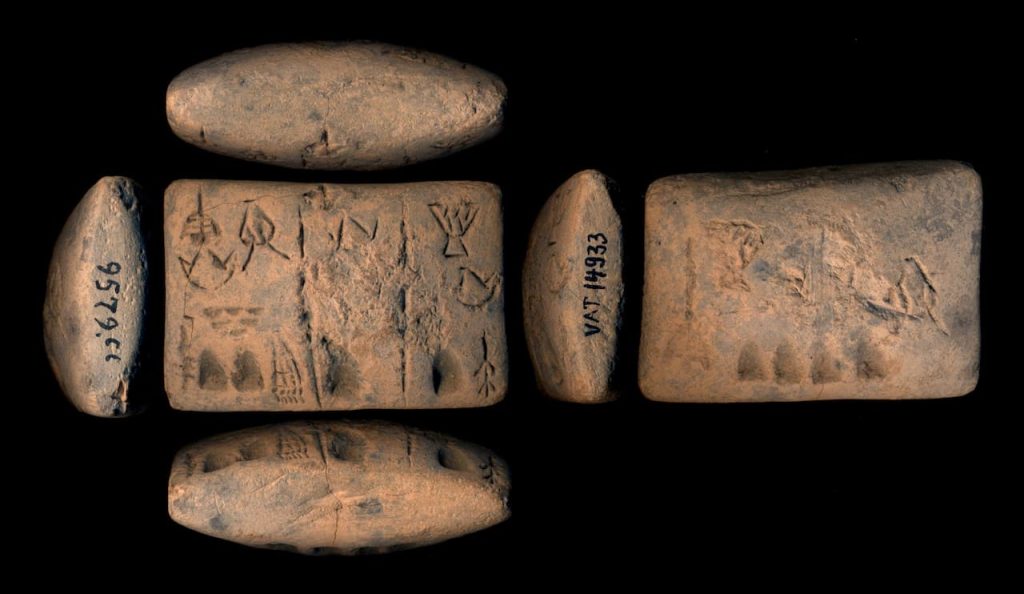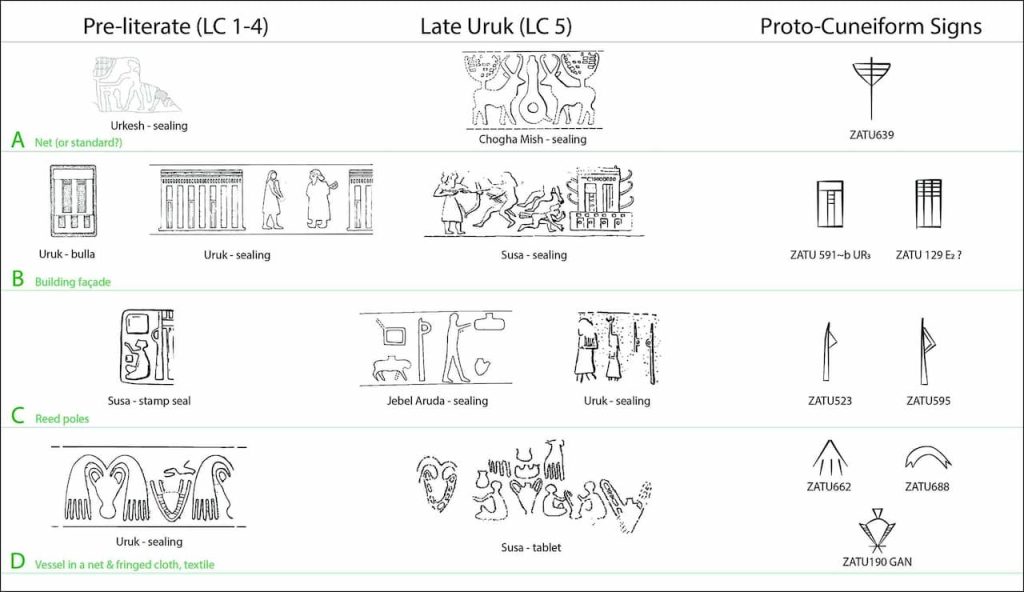
The cylindrical seals discovered in Mesopotamia provide clues to the origins of writing
Researchers from the University of Bologna have discovered a connection between proto-cuneiform writing and older stone images carved on ancient cylinder seals from around 3000 BCE in Uruk. The study found that the origins of writing in Mesopotamia lie in the images pressed onto ancient stone cylinder seals.
It is believed that the world’s oldest writing system emerged around 3200 BCE in the region now known as Iraq. The writing, known as cuneiform, represented both a sound and a meaning. It preceded a simpler system called proto-cuneiform, which was used from 3350 to 3000 BCE.
These cylindrical seals were small stone objects with intricate carvings that were rolled over clay tablets to leave an impression. Starting from the mid-fourth millennium BCE, cylinder seals were used in Uruk as part of an accounting system to track the production, storage, and transportation of various consumer goods, particularly textiles and agricultural products.
A study published in the journal Antiquity reveals connections between the proto-cuneiform symbols that emerged in Uruk, one of the oldest and most important cities of Mesopotamia, around 3000 BCE, and the images carved on ancient seals, some of which are estimated to be around 6,000 years old.

‘The conceptual leap that allowed the transition from symbolism to actual writing is a fundamental development for human technologies,’ explains Silvia Ferrara, professor in the Department of Classical Philology and Italian Studies at the University of Bologna and lead researcher, who coordinated the research group. ‘The results of this study are a bridging point in the transition from prehistory to history: they show how some images from the still prehistoric era were incorporated into one of the first writing systems devised by man’.

Silvia Ferrara said images on the seals were used in close association with the first writing. But there is a lot they did not know about the relationship between the two.
“When they began researching this, the researchers expected to find some shared shapes. But they discovered direct parallels between late prehistoric seals and proto-cuneiform signs,” Prof Ferrara said.
Ferrara and her team have discovered a number of recurrent themes on these seals, such as patterns associated with the transportation of textiles and ceramics. The fact that early proto-cuneiform signs share these same themes suggests that the seals’ symbols may have directly influenced or served as inspiration for the proto-cuneiform system.
The researchers observed that earlier prehistoric seal motifs do not resemble proto-cuneiform icons as much as later prehistoric ones, and gained valuable insights into the time frame of the evolution of symbol traditions that influenced the invention of writing.
Additionally supporting the notion that seal motifs developed from particular administrative functions to a structured writing system is the research team’s methodical comparison of seal motifs with proto-cuneiform signs. A lineage of symbolic representation that developed alongside Mesopotamia’s early urban and economic growth can be seen by following the evolution of these images into proto-cuneiform signs, as co-researchers Kathryn Kelley and Mattia Cartolano point out.
The study was published in Antiquity.
DOI: https://doi.org/10.15184/aqy.2024.165
Cover Image Credit: Franck Raux / GrandPalaisRmn – Musée du Louvre
You may also like
- A 1700-year-old statue of Pan unearthed during the excavations at Polyeuktos in İstanbul
- The granary was found in the ancient city of Sebaste, founded by the first Roman emperor Augustus
- Donalar Kale Kapı Rock Tomb or Donalar Rock Tomb
- Theater emerges as works continue in ancient city of Perinthos
- Urartian King Argishti’s bronze shield revealed the name of an unknown country
- The religious center of Lycia, the ancient city of Letoon
- Who were the Luwians?
- A new study brings a fresh perspective on the Anatolian origin of the Indo-European languages
- Perhaps the oldest thermal treatment center in the world, which has been in continuous use for 2000 years -Basilica Therma Roman Bath or King’s Daughter-
- The largest synagogue of the ancient world, located in the ancient city of Sardis, is being restored











Leave a Reply